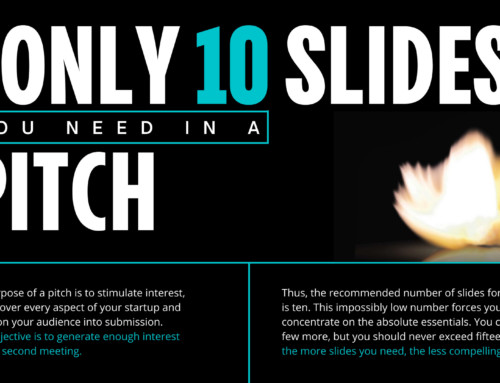Check out this excellent compilation of visualization methods called “A Periodic Table of Visualization Methods.” This came to my attention via a convoluted path from BoingBoing (who thanks Mike Love) to Seth Godin to Acorn Creative. Ralph Lengler and Martin J. Eppler created it. You might also enjoy reading their paper, entitled “Towards a Periodic Table of Visualization Methods for Management”
On a related topic, some people are lucky enough to have the ability to transform the spoken word into graphics in real time. I gave a speech to the International Coach Federation, and Martha McGinnis created this graphic representation of it. You may find this useful as a quick summary of my Art of Innovation speech (you can watch the speech online here). Here is Martha’s chart in two sizes:
And I just found out about this mind map of the book at Anabubula.com.






Thanks for the speach, it would be imposible for me to listen to you in any other way!
Topography to Teacup
Just as aluminum is sometimes called solidified energy because of the amount of electricity it takes to smelt, I sometimes think of products as solidified meaning. Guy Kawasaki recently linked to this Periodic Table of Visualization
I l…
Guy,
I’m glad you posted about visualization. Sketching has always been a part of my product design process, but I find it even more useful for designing a startup. I use storyboards of no more that eight squares to explore everything from customer behavior when opening one of my packages to warehousing and fulfillment. These “vignettes” of my future business play out like short skits in my mind- I want them to remain in the same form when I put them on paper. I’ve also found that storyboards, especially when you draw them while in dialogue, are a wonderful way to collaborate. The hardest part is forcing yourself to use sketches more than words in each frame.
Edward Tufte is the world’s expert on visualizations, if anyone is interested in learning more about the topic:
https://www.edwardtufte.com/tufte/
His books contain some fascinating historical examples of dense-with-data yet informative-at-a-glance visualizations. Highly recommended.
I wish I would have that ability like Martha has =) Another great resource on visualization that regularly visit and enjoy is http://infosthetics.com/
I would second http://infosthetics.com/ as a great resource. Great visualizations can be hard to come by and are often much more powerful than text at conveying information. Plus don’t they just give that warm fuzzy feeling. Here’s a great example I came across recently thanks to all the iphone hype http://www.sizeasy.com.
Speaking about the art of visualization, please take a look here: [http://anabubula.com/node/25]
A very nice mindmapping approach using as example one of your super books
It is scary when blogs I read start to overlap.
Here’s Stephen Few’s comments on the periodic table.
http://www.perceptualedge.com/blog/?p=81
His blog is great for those interested in visualisation, and I highly recommend his book on dashboards.
Visualization as applied to enhancing athletic performance has been around for years. I interviewed an Olympic Judo coach back in the early 80’s who used it as a component of the Feldenkrais Method. In my view, it’s a critical tool, and the Periodic Table you linked to is a terrific way to explore it. I’m going to share it with my peers at Microsoft.
If you want some good mind mapping tips the folks at NovaMind provide a great free paper called The Laws of Mind Mapping.
http://www.nova-mind.com/AboutMM/
These tools make it easy to turn text into visual. It took a lot more left-brain training to learn to use them as change tools. I also like them for seeing synchronicity and patterns in seemingly disparate pieces of information..great for blogging.
In a nutshell, you know what I like about Guy Kawasaki? It’s that he can write about Linkedin one week and in the same space one week later write about “The Art of Visualization”.
But what I really, really, deeply like about him is that he can write about such “seemingly” disparate things as Linkedin and The Art of Visualization on a blog called “How To Change The World” – and no one dares to challenge him for using such a seemingly audacious title for his outstanding little “practical blog for impractical people.”
Thanks for sharing The Art of Visualization and KUDOS for breaking molds, Guy!
Two very different but very cool visualizations. Now if I could only learn to draw…
Using Visualization in software development process is very effective and useful. But the challenge is to find someone who understands the requirement and also knows to draw the idea in visual forms. Thanks for the post on this interesting topic.
A Periodic Table of Visualisation Methods
Compilation of visualization methods called “A Periodic Table of Visualization Methods.” Interesting idea and some nice examples. I find a lot of these are about simplifying very complex projects into something everyone around a table can agree on. Usu…
That illustration of your talk is wonderful! You and she should sell posters :-)
FreeMind, visualization, mind-mapping and Guy Kawasaki.
The great links on Guy Kawasakis blog are almost too many to keep up with.
In a post yesterday, Guy posted a link to a periodic table of visualization methods, as well as a very interesting mind map of his latest book, The Art of the Start.
I&…
Links for Friday, 1/12/07
The Luddite who helps Apple look so good Now 39, Apple’s chief designer is the man responsible for injecting the cool factor into 15 years of the company’s devices, from the iMac and the iPod to this week’s iPhone, and
Visualization is not only a relfection of some art processes, but also a scientific field of investigation ( as infovis is ).
Among the resources listed above, I would like to give a look to Manuel Lima’s work on collecting complex systems and networks visualizations on his http://www.visualcomplexity.com/.
Speaking of visualization – you guys may want to watch the presentation of Hans Rosling on TED Talks. He received great feedback for the visualization during his session:
http://tedblog.typepad.com/tedblog/2006/06/hans_rosling_on.html
Art of the visualisation, it really is amazing how you can simplify complex things using a table…quite an interesting approach.
Hey can you do a report on the iPhone? I would definitely Digg it. Incidentally I find it humorous that Steve Jobs said they were going to capture 1% of the market with 10 million phone — I’m confused now. What’s with the mixed messages Guy? It is still faux pas to say 1%?!
This is the most useful post I have read for a long while.
A new poster is already ready for my office wall, and I think I will use this technique to teach my students as well.
Very impressive.
Very interesting, I also find it amazing how some people has the ability to transform words into images so effectively
Thank you very much for this post – I absolutely love the periodic table for visualisation link!
I like those charts from Martha. I don’t usually have time for quite that much artistic creativity, but when I attend a conference I usually come home and make a one-pager laid out in a fun (maybe obnoxious) way to sit on my desk. While most people are forgetting what they learned, I’m continuously reviewing…
Here’s one I did for the Willow Creek Leadership Summit 2001.
Consultants gonewild
I came across a crazy post on Guy Kawasakis blog last week about the Art of Visualization. The Periodic Table format to display different methods of visualization is very cool, but it points to too many consultants, not enough work. As a forme…
Wow, is this really what a knowledge map looks like?
Heres a good idea. A neat compilation of a range of visualisation techniques arranged in the form of a periodic table. I was checking out all the different examples by rolling my mouse over each element and then notice this…
Guy –
I always appreciate your insights – this post misses one fairly obvious connection. One of the leading (if not the primary) consultant groups in visual facilitation is and always has been The Grove Consultants International. http://www.grove.com/
If you look around, you will realize that a lot of what is out there now, comes from their method. It is a testimony to their vision in many ways. Since they are from the Bay Area, I would be surprised if you haven’t run across them before, but it is always good to revisit old friends.
I also try to be creative these days but it’s hard (Engineer + MBA, so rational ;-))
Here are 2 attempts :
Value Chain & SOA
and
A web 2.0 Architecture
The Art of Innovation
Ah, Guy Kawasaki – always good for some inspiration and provocative posts! As a longtime fan of Guy (great insights into Software Evangelism, startups, power networking, and attention capturing presentation styles, among other topics), I have to remind…
The Way Things Look for 2007
The beginning of the year is a good time to rethink everything from personal finances to the extra stuff in your closets to your business plan. I looked at many of those things thinking through possible resolutions for 2007. There is growing
Quantitative Graphics
Effective quantitative graphics are, like, cool.
Design Management Tools
More and more I discover the range of visualization tools andpower of visualization in general in business contexts these days (even though this is not a too groundbreaking insight ;-). Let it be for examplefor my current MBA class at the …
Periodensystem der Visualisierung
Immer wieder steht man vor der Frage, wie man Themen am besten grafisch darstellen kann. Durch einen Blogbeitrag von Guy Kawasaki bin ich auf die Idee von zwei Schweizer Kommunikationswissenschaftlern aufmerksam geworden, Visualisierungsmethoden in ein…
I’ve posted a similar article at http://myselfdevelopment.net with a reference to this post as well. Thanks.
Great article Guy, I believe that the origianl concept of mindmaps was coined by a Tony Buzan and he has writen a number of excellent books on the subject. His basic concept was that mindmaps mirror the way the brain thinks and relates to problems, using related links. The use of PC applications that can create and manage mindmaps is a definate advantage over paper maps. I have found it a wonderful way of creatively analysing a new sales account opportunity, positioning our companys offerings or managing my sales pipeline. My favorite Mindmap software is Mindjet mindjet.com which links into Outlook and MS Office.
Ciaran
The Art of Visualization
How to Change the World: The Art of Visualization
Adding Vroom Vroom to Your Visualizations
Today . . . I am thinking about the amazing results my clients are achieving by adding vroom vroom to their visualizations. Up until a few shorts months ago, when asked if I visualized I would say, Yes. Now, when
To me, if you need to visualize a business model or a project, XPLANE.com are the masters. I sold them my visualization company in Spain (Ideamaps) and I am still learning from them.
Dave Gray, its CEO at: http://communicationnation.blogspot.com/ See XPLANE´s next generation search engine visualization as an example in this page.
Visualization generally means skill to visualize or imagine something before it is created. It may be anything a building or product. 3D visualization is prominently found in the discipline of Architecture. It will help an end user get a feel of how a building outside, interior or site looks after it is constructed Technique that gives a realistic look and feel to the building or site is called “Rendering” .